“], “filter”: { “nextExceptions”: “img, blockquote, div”, “nextContainsExceptions”: “img, blockquote, a.btn, a.o-button”} }”>
Cycling trainers have evolved so dramatically and so quickly that they’re hard to recognize from even a handful of years ago when they were no more than devices that strapped around a bike’s rear wheel to let you ride in place.
Once something begrudgingly reached for to maintain fitness in the depths of winter, trainers these days are useful enough — and dare I say fun enough — that they make sense as a training tool no matter the time of year.
Need to get in a ride without leaving the house? Or maybe you want to do very precise intervals? Perhaps you want to race without going anywhere and without risk of crashing? What about riding virtually with friends around the country or the world? All great reasons to look at a smart trainer.
There are many options on the market, so to make your decision easier I’ve listed the best smart trainers for a variety of uses. I’ve also gone through the major brands and relevant products to let you know if there’s something else worth considering for your needs, even if it’s not what I picked as the best choice in a category.
One thing to keep in mind as you shop through the newest trainers on the marker presented here: a few brands are still selling old stock of trainers that haven’t seen updates in a long time. Nothing wrong with that if the price is right — though sadly the price is not always right.
One more small note. For those looking for a Zwift compatible smart trainer, everything here will fit the bill. All major smart trainers will connect via ANT+ or Bluetooth to a smart device and will work with the indoor training software of your choice.
Disclosure: Most of the links in Velo’s Buyer’s Guides are affiliate links and we may earn an affiliate commission on things you buy through them. It doesn’t cost you anything extra and your support (indirectly) helps pay for Josh’s growing hat collection. Learn more.
Prices updated November 2024.
Section divider
Best smart trainers quicklinks
If you are looking for information to know when shopping for the best smart trainers check out How to choose the best smart trainer.
If you are curious about a trainer you don’t see in these recommendations jump to Other Smart Trainers where there are more options and additional information.
Section divider
Best smart trainer for Zwift
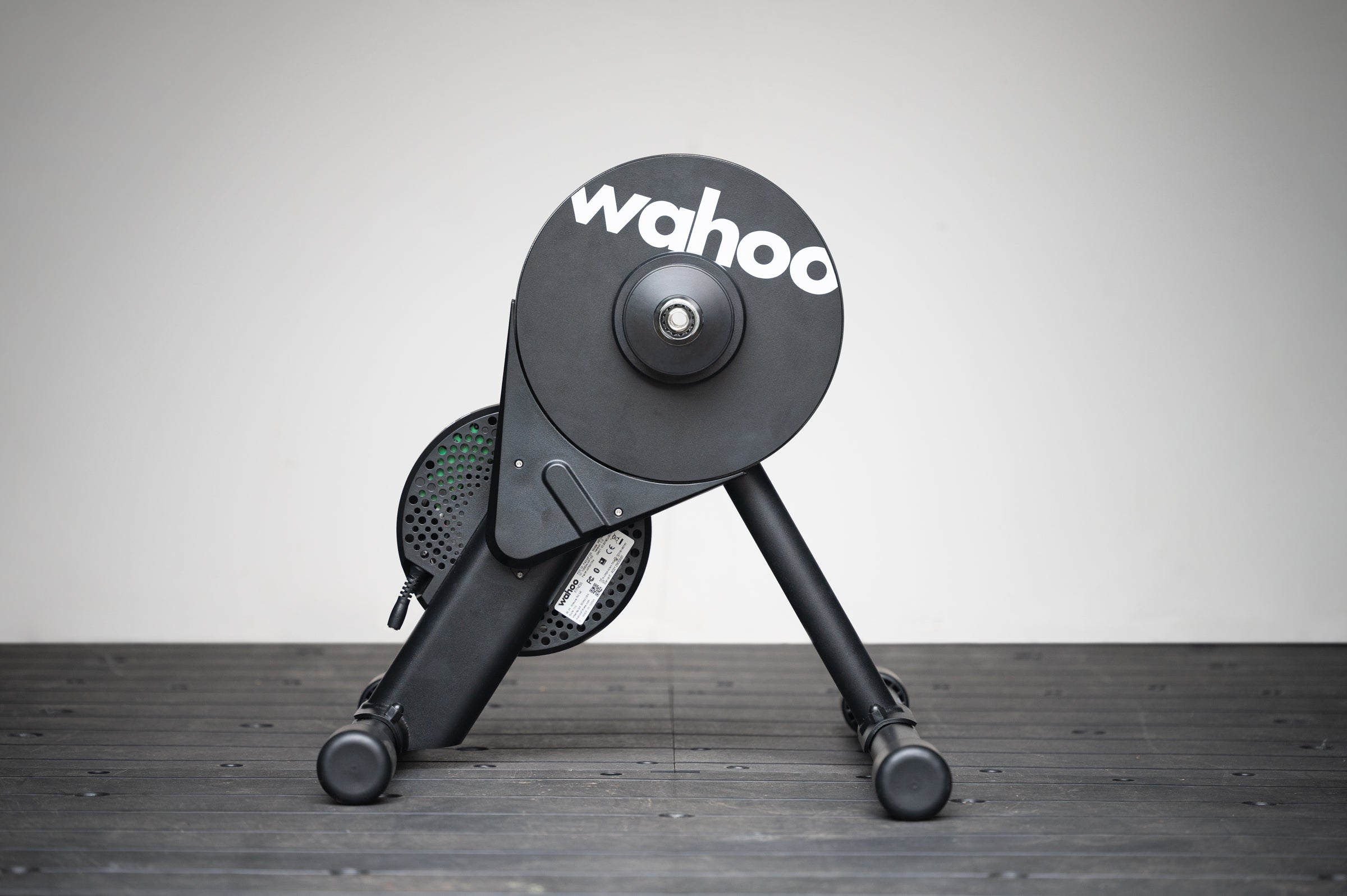
The market has largely declared Zwift the winner of the indoor riding software race. That’s not to say there’s not other great options, ones that are even better for some people, but Zwift has the largest user base and when it comes to riding on Zwift, there’s simply not a better all-around choice for a trainer.
Be careful with that statement. I don’t mean to be tricky but there is nuance. You can use any trainer to ride in Zwift and there are better trainers available. The difference is that you can buy the Wahoo Kickr Core Zwift One Smart Trainer for significantly less money and it comes with the Zwift Cog and Click system for simple virtual shifting no matter your bike. It also offers a $50 discount to a year of Zwift plus good enough specs.
Sure, you can pick the Wahoo Kickr v6 or any number of great trainers from Elite and Tacx for better specs but it doesn’t really matter. If you ride in Zwift the Kickr Core covers almost every gradient available. If you decide to upgrade down the line, you can add the Zwift:Ride and be done with swapping a bike on and off.
If you do decide you want to use software besides Zwift, this system still works. You could swap the Zwift Hub for a cassette if you wanted to but there’s not actually a reason. Any software, like TrainerRoad, that uses ERG mode works just fine.
Better make sure you have room for it though. There’s no elegant folding solution to the Zwift Kickr Core.
For more info see our full Wahoo Kickr Core Zwift One Review.
Back to top
Section divider
Best budget smart trainer

| Model: | Saris H3 Plus |
| Specs: | 20% slope simulation; +/- 2% power measurement; 2000w max resistance |
| Highs: | Excellent app functionality; Folds into a compact shape that’s easy to move and store; Amazing value |
| Lows: | Price doesn’t include a cassette |
| Buy: | $399.99 USD / $576.00 CAD from Saris
£449.00 from ChainReaction |
Way back in 2019 the Saris H3 came to market competing in the premium smart trainer space. The slope simulation and max resistance matched other premium products, and the form factor makes it easy to fold and store. I spent years riding with it and it was every bit as good as anything from Wahoo or Garmin Tacx.
The Saris H3 even had the bonus of a great app that allowed users to ride in ERG mode through the app. That made it easy to jump into Zwift, disconnect trainer control, and use the Saris app to ride at a constant power. That’s an excellent way to zone out while making sure you are working hard enough plus still racking up Zwift miles.
Then Saris stopped updating it. It’s been five years and every other brand has new features and products. For example, there’s a new class of trainers with movement, premium trainers now have a faster race mode, and there are things like wifi connectivity. The only thing Saris did was make sure you could use a 12-speed cassette.
That should mean this is a non-starter not worth mentioning, right? Well, except for the fact that for most people those changes in trainers since 2019 don’t matter. More importantly, Saris drastically dropped the price. What used to be a premium trainer at a premium price is now priced competitively with used trainers. Keep in mind the real price is a little higher since you do need to buy a cassette. Otherwise though, this is an amazing product at the price it sells for today.
This category may end up going to something from JetBlack soon, buy right now I don’t have to make that decision. The JetBlack Victory looks quite impressive and it matches the Saris pricing. As I write though, it’s not available for purchase yet.
Back to top
Section divider
Best all-around smart trainer
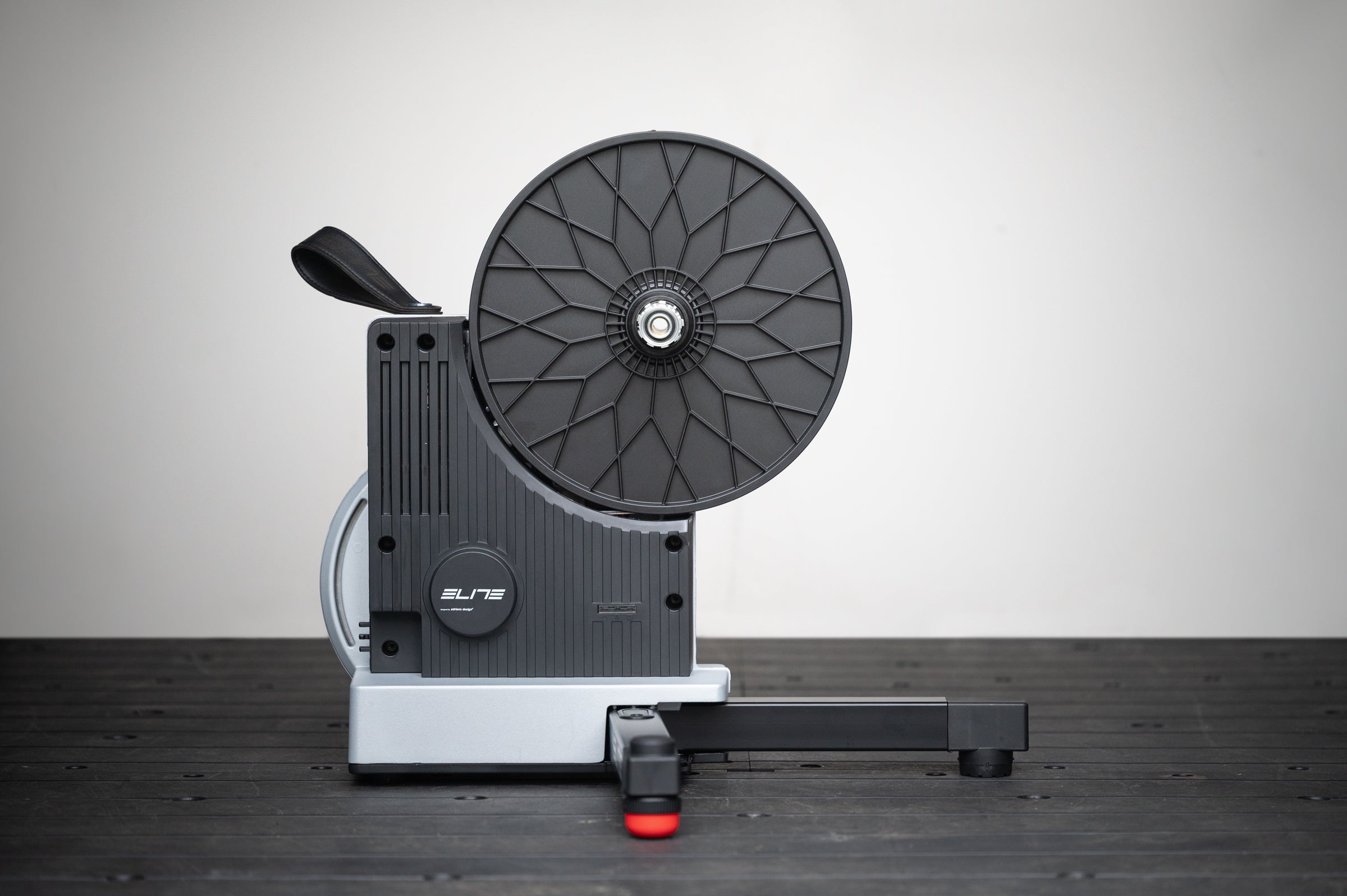
| Model: | Elite Justo |
| Specs: | 24% slope simulation; Greater than 1% power measurement; 2300w max resistance |
| Highs: | Rich accessory upgrade path; Available wired connection; Race mode; Limited use of plastic and a switch to recycled |
| Lows: | Lacks a powered flywheel; Price doesn’t include a cassette |
| Buy: | $1,199.99 USD from Backcountry
€838.24 from R2-Bike |
This is the most competitive category under the best smart trainers header. For a vast majority of people the Wahoo Kickr Core Zwift One Smart Trainer, or the Saris H3+, is more than enough trainer. On the other hand, the Neo 3M level of trainer is lovely but it’s just too much money for many people. Then there’s this category.
Pay a bit more and you get an upgrade but price is less drastic than the next level up. The trainers that compete at this level are the Elite Justo, Wahoo Kickr v6, and the Garmin Tacx Neo 2T. All are very good and the competition is very tight.
Because of that, I spent an inordinate amount of time falling down the rabbit hole of positives and negatives before landing on my Elite Justo recommendation. The Garmin Tacx Neo 2T is an amazing trainer and I love that it has a powered flywheel. Unfortunately it can interfere with some disc brake frames and there’s no easy upgrade path (more on that in a moment). The Wahoo Kickr v6 is never a bad choice but it’s got a bit less movement. It is worth mentioning that it’s a bit cheaper though.
What the Elite Justo offers on its own is a compelling package of premium features. Power measurement is greater than 1% and there’s big numbers for max resistance and slope simulation. It’s got a faster reporting race mode like the Kickr and the design is actually quite pretty. There’s faux leather for the handle, limited use of plastics, and a switch to recycled plastic, plus it folds flat and looks nice when sitting there. Those design details might not be the end all be all but it’s nice when you’ve spent a bunch of money.
Another great feature is the side to side movement. Like Wahoo, the feet that Elite uses offer, for lack of a better term, squish to provide some movement. The difference is Elite offers a bit more squish and there’s options for the amount of give. There’s also an available hard wired network adapter or, when the Justo 2 hits the market, it’ll have an included cassette and built-in wifi.
What I really like about the Elite Justo 2 though is the upgrade-ability. A trainer at this level will last a lot of years. Choose the Elite option and you can later add the Elite Rizer gradient simulator and/or the Elite Square indoor bike frame. Wahoo offers an upgrade path as well but the Elite products are better, albeit more expensive.
Back to top
Section divider
Best smart trainer with movement
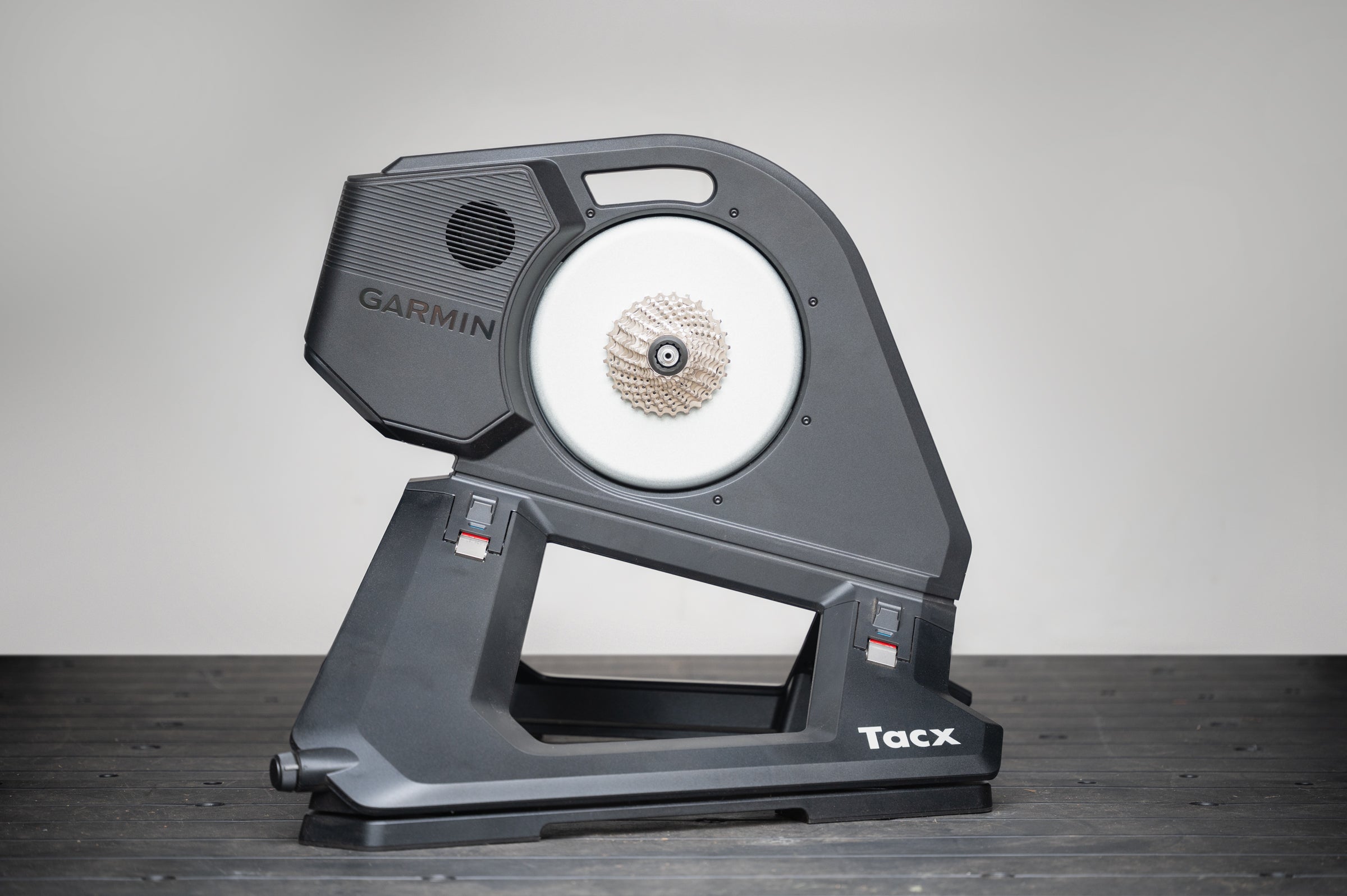
This whole category is very much an in-between option at this point. The Garmin Tacx Neo 3M and the Wahoo Kickr Move are the very best of what you can buy if you want to use your own bike frame. The problem is that the Elite Square is coming to market and that makes either product more difficult to recommend. Unless you want movement.
Some people despise the locked-in, static, feeling of a trainer. Both Garmin and Wahoo offer a solution to that problem. First it starts with the best trainers on the market. The Garmin Tacx option offers power measurement accuracy greater than 1% plus 25% slope simulation and 2200 watts of max resistance.
That’s as good as it gets but Wahoo offers about the same. Technically the Garmin Tacx Neo 3M offers a higher gradient of 25% vs 20% for the Wahoo but it just doesn’t matter. There’s no need for gradient simulations that high indoors.
There are two things that actually matter that the Garmin Tacx NEO 3M has that Wahoo can’t match. First there’s road feel where the trainer shakes a bit to simulate different road surfaces. It’s not a huge thing but it’s a nice bonus when you are paying a lot of money for a nice trainer.
Then second is a powered flywheel that simulates descents. Again, this isn’t a huge thing but outside when you descend you actually accelerate a bit. Wahoo can’t simulate that and Tacx can. It’s especially nice in a Zwift race where it helps you recover a bit.
The only thing that the Neo 3M lacks is a good gradient simulation accessory. Granted this is a pricey accessory but it’s notable that there’s nothing to pick from. The Elite Rizer works, and it’s the better of the two gradient simulation accessories, but you’d need to lock the Neo 3M in place to use it.
There’s also the lack of included 12-speed cassette but Wahoo does the same thing.
For more information visit our launch day Garmin Tacx NEO 3M article.
Back to top
Section divider
Best wheel-on smart trainer
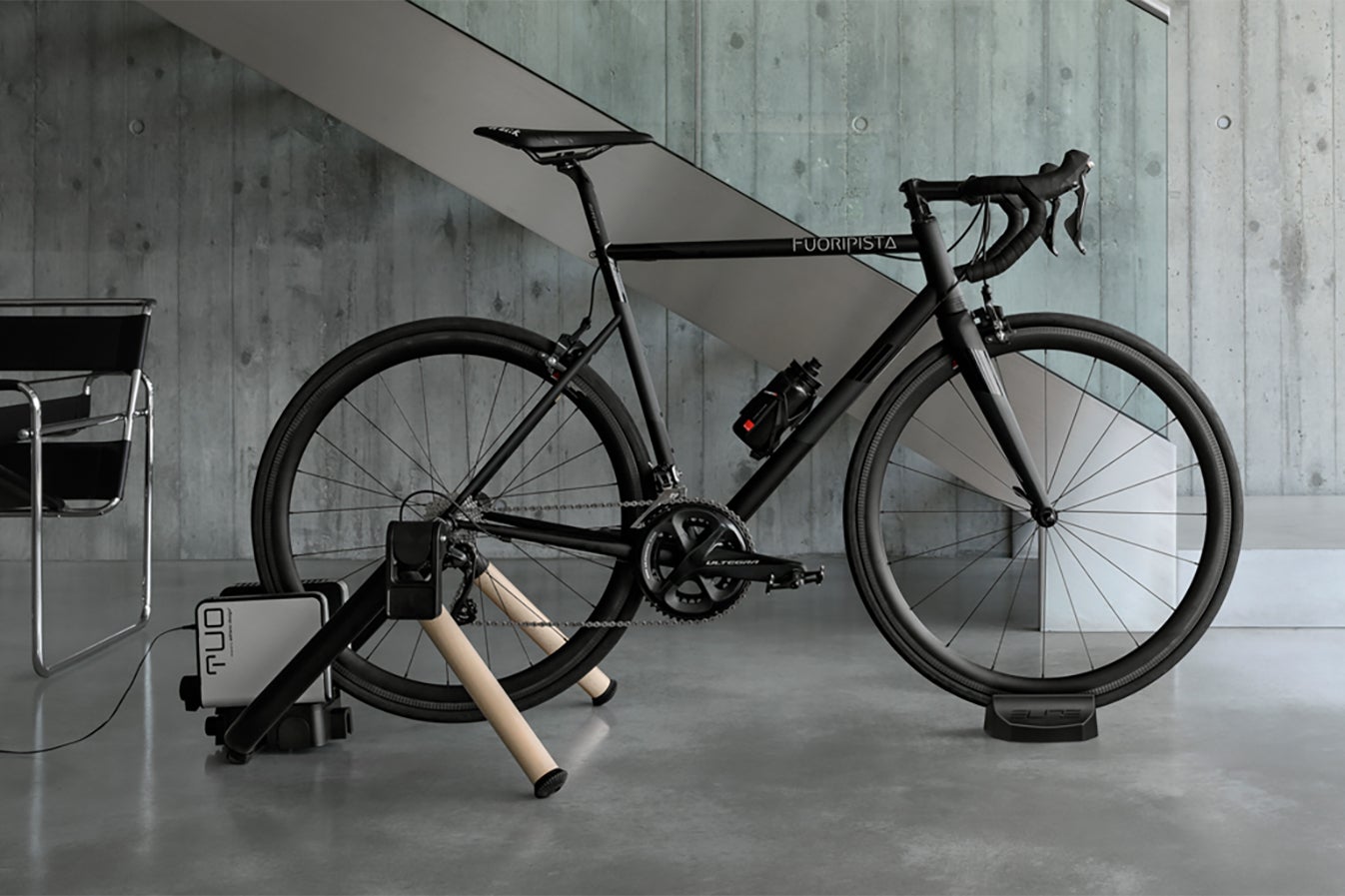
| Model: | Elite Tuo |
| Specs: | 10% slope simulation; +/- 5% power measurement; 1,300w max resistance |
| Highs: | Easy to store; Built in cadence sensor |
| Lows: | wheel-on trainers are a dying category; lacks an included front wheel block |
| Buy: | $249.00 USD from Backcountry
€256.30 from R2-Bike |
As I talked about in the intro, it wasn’t long ago that all indoor trainers for bikes used a system like this. The wheel stays on your bike and setup is minimal. The downside is that the whole system is only as good as the interaction between your tire and the trainer wheel. It works well enough with a road bike but it definitely eats tires and it’s loud.
For wheel-on trainers the three best choices are the Saris M2, Wahoo Kickr Snap, and Elite Tuo. Both the Saris and the Wahoo offer slightly better specs for a bit of extra money. On the face of it, you’d want to take your pick of the two but there’s a little more nuance than that.
Wahoo and Saris trainers both come in at 1500 watts max resistance. That means they can simulate a larger gradient. Then Wahoo offers a better power measurement at +/- 3% accuracy compared to +/- 5% for Elite and Saris. Here’s the thing though, wheel-on trainers are inherently inaccurate anyway. Elite also has the advantage of built in cadence measurement and folds up more elegantly. If there’s some reason you need to go with a wheel-on trainer, I’d recommend the Elite Tuo. It doesn’t have the top specs but it has what you need and it’s cheaper. You do have to purchase a front wheel block though and that raises the price a bit.
Keep in mind that for most people, price is the reason to choose a wheel-on smart trainer. If that’s you, consider buying used. You can match the price pretty easily for a used direct drive trainer.
Back to top
Section divider
Best budget smart bike
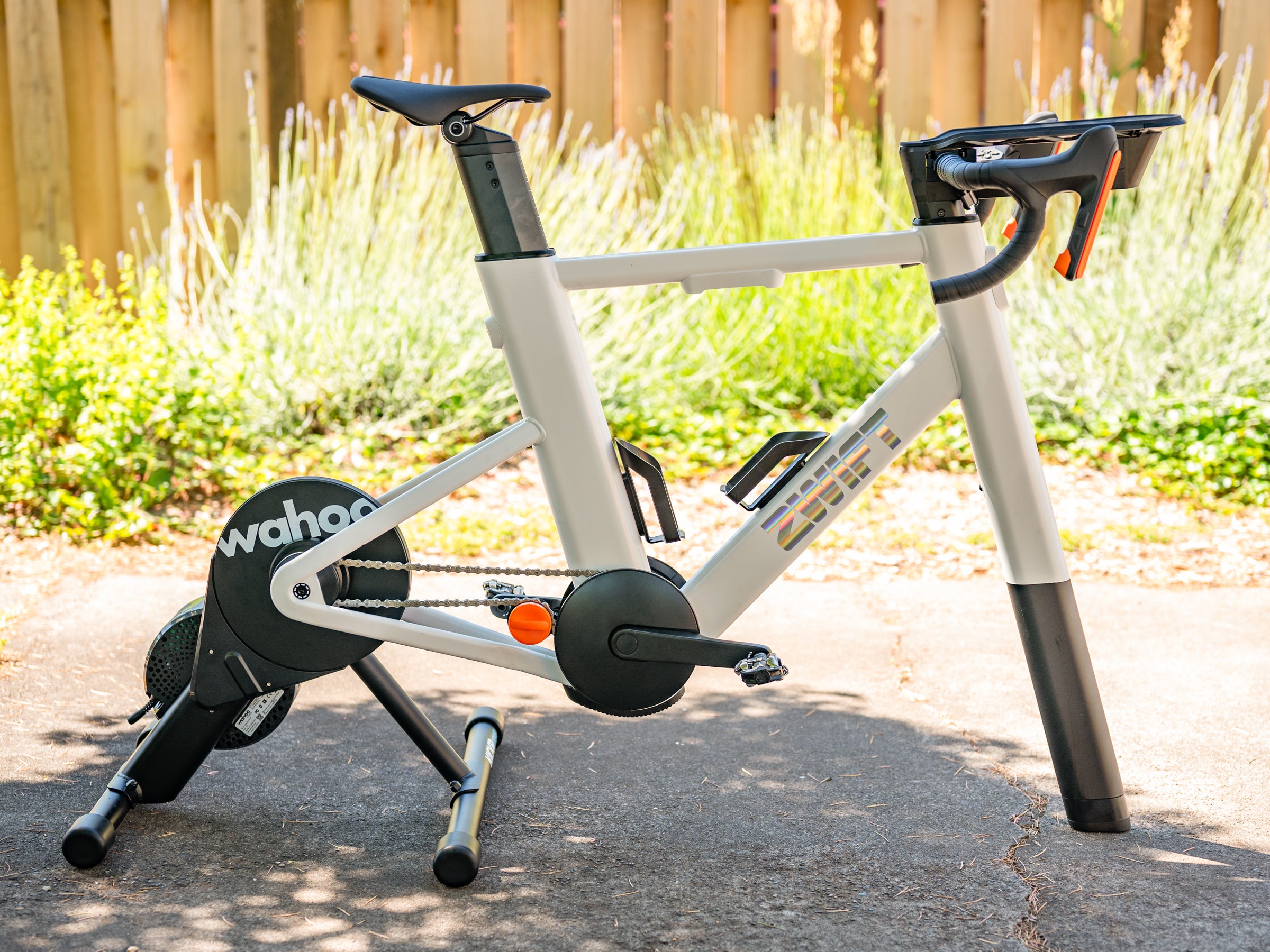
The Zwift:Ride isn’t strictly speaking one of the best smart trainers. I’m including it anyway because smart bikes should be part of any smart trainer purchase decision at this point. Moving your bike on and off a trainer isn’t ideal and neither is the wear and tear on your bike when it’s used as on a trainer (sweat does damage). In the past that typically meant people would put an old bike on the trainer to get around this limitation. Dedicated trainer bikes are incredible — I ride a Garmin Tacx Neo Bike Plus and I love it — but they are also expensive.
Then Zwift did what Zwift does and disrupted the existing market. The Zwift:Ride initially came out attached to a Wahoo Kickr Core but it’s now available for a handful of other trainers including the Wahoo KICKR V6, Wahoo KICKR Move, and Elite Direto XR with Zwift Cog and Click. You can buy it either bundled or on its own.
Once you’ve got the frame it will also include the Zwift Cog and Zwift Click. These accessories move the system from a cassette to a single speed with virtual shifting. The Zwift Click also provides steering, braking, and easier interaction within Zwift. As with the Wahoo Kickr Core and Zwift One Smart Trainer you can also ignore all of that and use the system with any software that uses ERG mode.
Simply stated, this is not the best indoor bike but it is the cheapest. It lacks crank length adjustability and while it works outside of Zwift, it’s very Zwift-centric. It’s also difficult to move since it’s a separate piece from the trainer plus it’s locked down and there’s no option to add movement. On the upside, it’s easy to get riding as Zwift does a great job with color coded instructions for set up.
Add all those positives and negatives together and it’s cheap enough and good enough that for a lot of people it’ll be a great option to get started with indoor riding. Later in the year the Elite Square is going to hit the market and that will be some real competition. For now though, the Zwift:Ride is price competitive with a number of the best smart trainers and should be a consideration.
For more information visit out full Zwift:Ride review.
Back to top
Section divider
How to choose the best smart trainer
The best smart trainers exist within a whole new category of trainers after only a few years of evolution. Part of that is drastic simplification. At one point not every option worked for every bike and not every option worked for every software. At this point that is, thankfully, behind us. Still, there are some things to consider when choosing which smart trainer is for you.
What is a direct drive turbo trainer?
In the US, we don’t typically use the term turbo trainer but it’s the same as a smart trainer. The direct drive part merely refers to a smart trainer that replaces your rear wheel. Instead of a wheel-on trainer, which I have listed as an option above, you remove the rear wheel and the trainer has a cassette on it.
What is a smart trainer?
A smart trainer is a trainer that uses software to adjust resistance felt by a rider to simulate real-world cycling.
Do I need to worry about the best bike trainer being compatible with my bike?
For the most part, no. Whatever combination of axle spacing or axle type you have will work. Most trainers include adapters for 130-135 x 5mm quick releases and 142 x 12mm thru-axles with adapters for 148 x 12mm and 157 x 12mm adapters available for purchase.
From there, the next piece to consider is cassette compatibility. Most trainer brands default to a Shimano HG compatible freehub that will work with 11-speed systems from Shimano and SRAM. I can tell you that I’ve also run a Shimano compatible cassette on a trainer with a Campagnolo 11-speed groupset for years without issue. Some trainers will also include a cassette and some will not. For those with 12-speed SRAM groupsets, you will want to make sure that a compatible freehub is available for purchase.
If you’d like to skip any cassette compatibility issues then the Zwift Cog is going to be your friend. The Zwift Cog isn’t universal for every trainer but it essentially converts compatible trainers into a single speed system with virtual shifting. This is great if you regularly use different bikes on the same trainer, or if you don’t want to think about it.
What software works with the best smart trainers?
This one is even easier than understanding which bikes are compatible with which smart trainers. Modern smart trainers all connect with Bluetooth and ANT+ and will work with whatever program you want to use. I included a note at the top about Zwift compatibility because that’s something people worry about but I can expand it here. Zwift is just one of many apps available for indoor training but everything is interoperable. If there was suddenly a specific app that didn’t work with specific trainers, that would be a big deal. We’ve moved past that being acceptable.
The one caveat to all that is Zwift virtual shifting. That’s how the Zwift Cog system, and by extension the Zwift:Ride, works. There’s some intentional misdirection around this system but there are also some limitations. Although Zwift has interval workouts, much of the experience is about riding your bike like you would outside. That means shifting your bike like you do outside and that system will only work in Zwift. All is not lost though.
If you have a trainer that uses Zwift virtual shifting you can still use it outside of Zwift. The difference is only that it won’t shift. Most software that isn’t Zwift doesn’t require shifting so things like TrainerRoad work without issue. However some software, such as Rouvy, have competing freeride systems. If you have a Zwift Cog, Rouvy or anything like it won’t work.
What is ERG mode and why does it matter?
As discussed above, a smart trainer means the resistance you feel is controlled by software. There are two ways that happens. The first is simulation mode. In simulation mode you are looking at some sort of virtual landscape, or potentially following a real life route indoors, and your trainer adjusts the resistance to make it feel like real life. It’s in simulation mode that max gradient specs might matter.
The other way that a smart trainer controls resistance is via ERG mode. In ERG mode, the trainer hardware and firmware will work together to keep your power output constant even as you adjust how hard and how fast you turn the pedals. Simply said, push harder, or spin faster, and your smart trainer will reduce the resistance. Spin slower, or push less, and your trainer will increase the resistance.
What’s fascinating about ERG mode is that it’s kind of the soul of a modern trainer. The hardware is capable of holding exact power and changing that number instantly. Your body is not capable of doing that. The way that different companies handle that mismatch encompasses the feel of a trainer and it’s not exactly the same from brand to brand.
How much does the max resistance matter for a smart trainer?
Trainer companies quote max resistance and max gradient simulation numbers as part of the specs. Both numbers are parts of the same thing and both numbers help give an understanding of how powerful a trainer is.
If these numbers are bigger, you are generally looking at a more expensive trainer but you might not need to care. If you can hit high sprint numbers, that’s pretty clear cut. Get a trainer that covers your sprint needs.
Incline numbers are a little different. Ideally you’d want something that covers the biggest incline you want to simulate. On the other hand, if your trainer only simulates up to a 16% max gradient and you ride up a 20% virtual gradient, it won’t break. It will merely feel like a 16% gradient. You likely won’t even notice and even if you do it’s probably a short amount of time.
Also keep in mind that Zwift allows you to turn down your simulation percentage. A hill that takes 1000 watts total output to get up will still take 1000 watts so it doesn’t really make anything easier. What it does is make it take longer to get up that hill since you are putting out less power. You can think of it as flattening and lengthening a hill. You can also think of it as virtual gearing. Either way, a lot of people ride like that and that lessens the few truly steep gradients in Zwift.
The biggest reason most people want to think about these numbers is that they are stand-ins for quality. Premium trainers will have bigger numbers than budget trainers. Even if the numbers don’t matter to you, the rest of the trainer is probably higher quality.
How much does smart trainer power accuracy matter?
The short answer: a lot. At least if you care about power data and training.
If you don’t care about using power outdoors, it doesn’t matter much at all. Simulating a ride in Zwift you won’t notice any difference with a more accurate trainer. You won’t even notice a difference if you are using software to do intervals at specific power ranges.
The reason you want accuracy is if you always ride with power and you need a transferable number. I almost always do intervals and FTP testing inside so I want high accuracy on that power meter. When I take it outside and use that number I’m not stacking as many variances.
Will a smart trainer damage my bike?
I can’t speak to every trainer and every bike but for the most part the answer is no. At least in the way that people imagine it will. Bike frames go through tons of fatigue testing and it’s incredibly unlikely that you are going to damage a bike because of the frame flexing while locked into a trainer. That doesn’t mean putting a bike in a trainer won’t damage it.
Your sweat is incredibly destructive. When you put your bike on a trainer it’s going to collect a lot of sweat and that will do damage over time. Make sure you use lots of covers for the bike, change those covers often, and wash your bike often. There are also sweat protection products, like this one from Muc Off, that help protect your bike.
How does Velo test the best smart trainers?
I’ve spent over 32,000 miles riding indoors and I’ve tested nearly every trainer on the market. I race indoors, I do intervals indoors, and I free ride using a wide range of apps and services. I even do 100-mile rides indoors on a semi regular basis. I also check power numbers against other power meters and I keep a close eye on price vs specs. The number one thing I do to test the best smart trainers is spend time riding them.
Back to top
Section divider
Other smart trainers
There’s a never ending list of new products and new companies. I’ve looked through the best smart trainers and spent time picking the winners I think are best for specific uses. That’s not all-encompassing though. These trainers are other relevant trainers. I’ve noted if they are worth considering or not.

| Model: | Wahoo Kickr Snap |
| Specs: | 12% slope simulation; +/- 3% power measurement; 1,500w max resistance |
| Highs: | Quick setup; Better specs than Elite Tuo; includes a front wheel block |
| Lows: | wheel-on trainers are a dying category; lacks cadence measurement |
| Bottom line: | I don’t generally recommend anyone choose a wheel-on trainer and if you do then the Tuo includes cadence measurement. Despite that, Wahoo makes quality products and the Kickr Snap offers quick setup with an included front wheel block and a reasonable price. |
| Buy: | $299.99 USD from Backcountry
$399.99 CAD from Wahoo £249.99 from Wahoo €299.99 from Wahoo |
Back to top
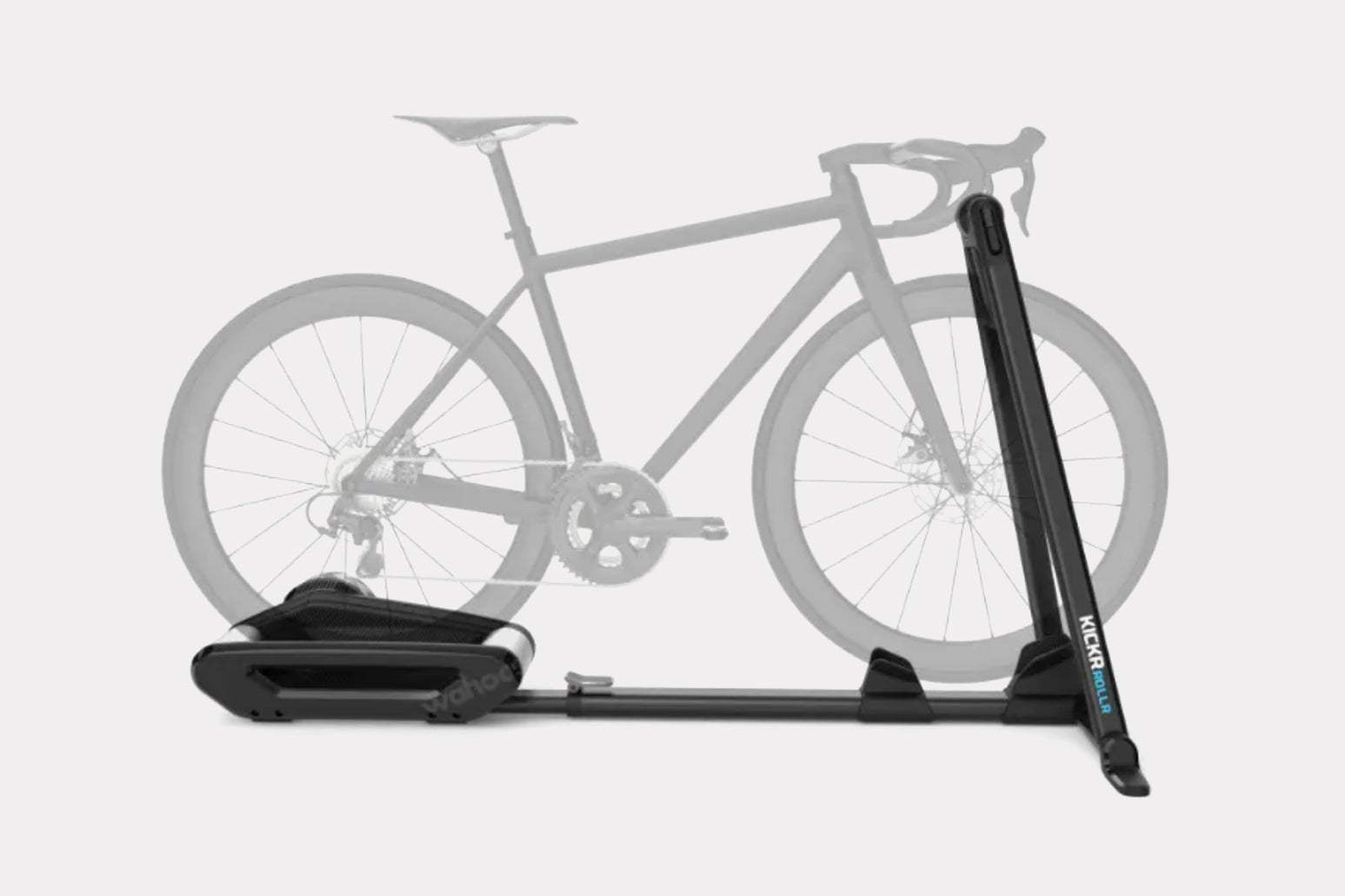
| Model: | Wahoo Kickr Rollr |
| Specs: | 10% slope simulation; no power measurement; 1,500w max resistance |
| Highs: | Ultrafast bike installation; Natural road feel; No challenge changing between drivetrains or bikes |
| Lows: | Lacks power measurement; never fully spins free |
| Bottom line: | Rollers are one of the most incredible training tools you can use on your journey. Everyone should have a set at some point however this is not the set to buy. The advantage with the Kickr Rollr is the road feel of rollers and you can’t fall over. Unfortunately in exchange you pay more and get less compared to other trainers. I’m still including it because it’s well made and doesn’t promise more than it delivers. Think hard about this though. |
| Buy: | $599.99 USD from Backcountry
$874.99 CAD from Wahoo £549.99 from Wahoo €599.99 from Wahoo |
Back to top
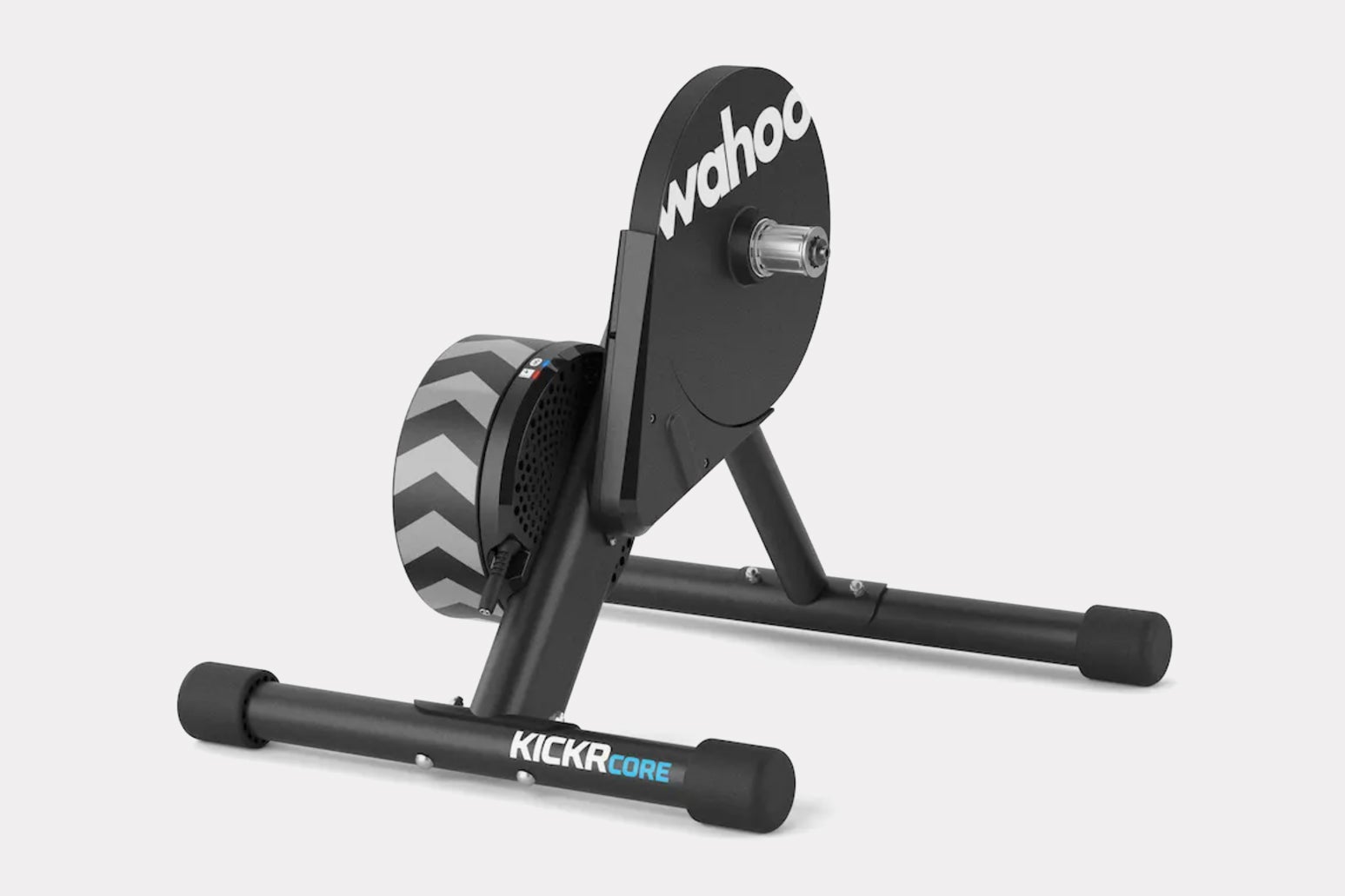
| Model: | Wahoo Kickr Core |
| Specs: | 16% slope simulation; +/- 2% power measurement; 1800w max resistance |
| Highs: | Optional $50 discount for a year of Zwift; Zwift:Ride Frame compatibility; Zwift Cog compatibility; includes a cassette |
| Lows: | Doesn’t have useful folding for storage |
| Bottom line: | I included the exact same product as the best smart trainer for riding with Zwift. I’m including it again because it’s available without the Zwift cog and with cassette options. It’s the same product but it’s still incredibly good and this way it’s easier to use outside of Zwift. |
| Buy: | $499.99 USD from Backcountry
$859.99 CAD from Wahoo |
Back to top
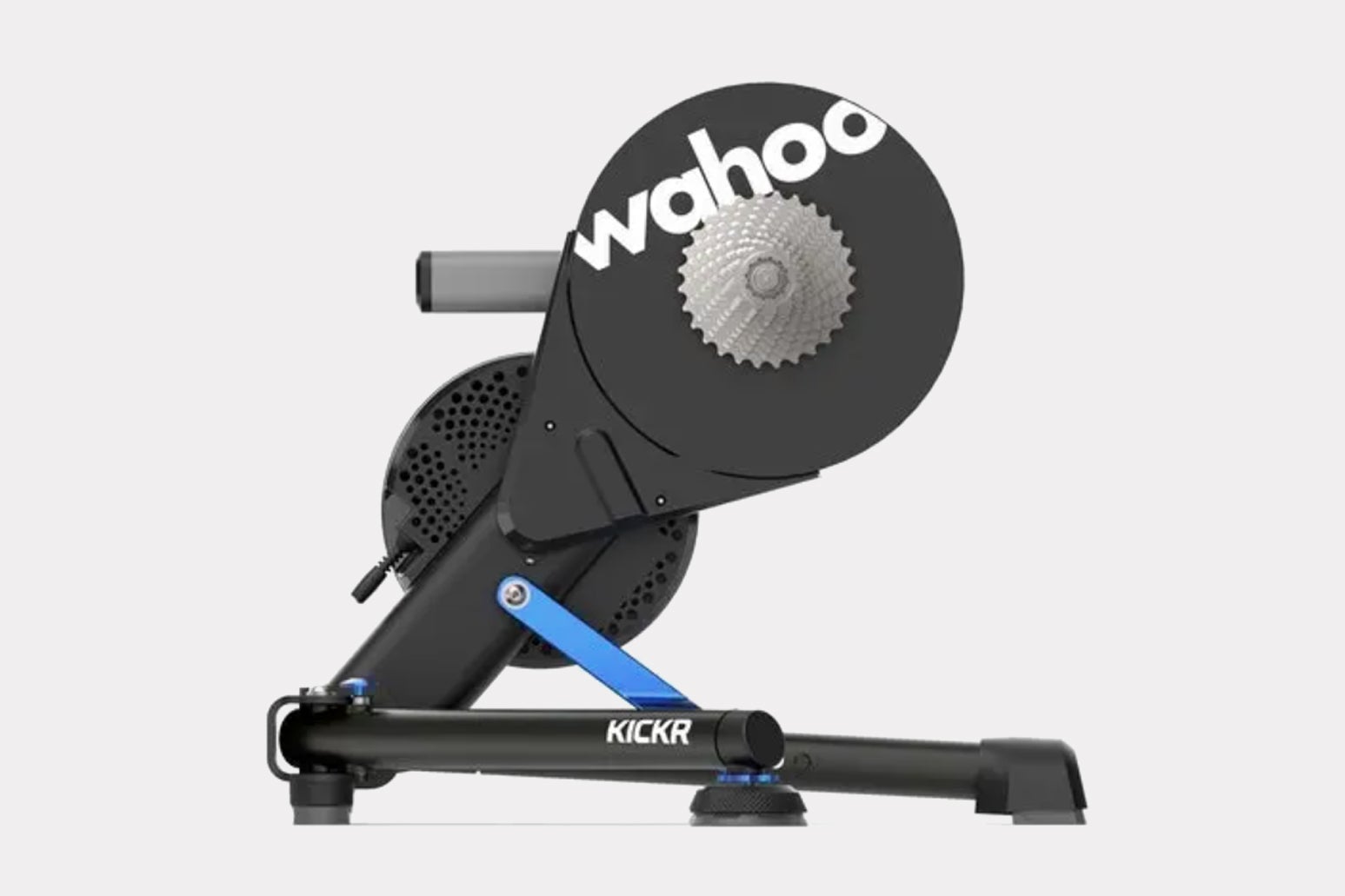
| Model: | Wahoo Kickr v6 |
| Specs: | 20% slope simulation; +/- 1% power measurement; 2,200w max resistance |
| Highs: | Easy to use handle; built in wifi; race mode; ERG Easy Ramp; side to side movement; Zwift:Ride compatibility |
| Lows: | Lacks a powered flywheel |
| Bottom line: | The Wahoo Kickr arguably kicked (pun) off the whole smart trainer segment. It’s also widely celebrated as the best of all time. It narrowly missed out on my recommendation for the best all around smart trainer because it has side to side movement but less than the Elite and the Elite has better quality accessories to upgrade. That said, the Kickr v6 is a little cheaper and it has access to the Zwift:Ride as well as the Wahoo Kickr Climb. It’s also got Wifi built in plus a race mode for quicker data transmission using that Wifi. I’ve always loved how usable the handle is as well. |
| Buy: | $1,000.00 USD from REI
$1,499.99 CAD from Wahoo £899.99 from Wahoo €999.99 from Wahoo |
Back to top
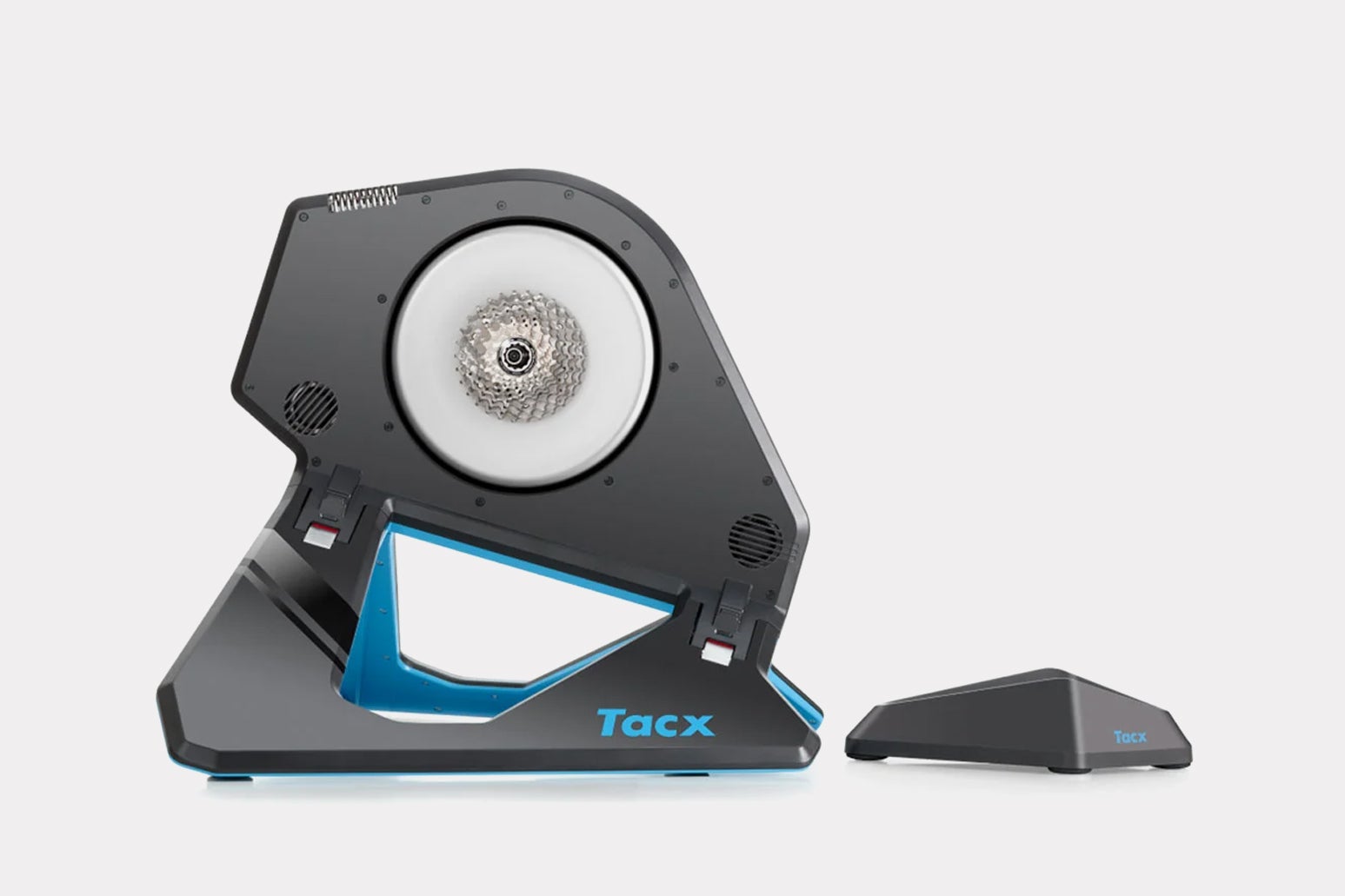
| Model: | Garmin Tacx Neo 2T |
| Specs: | 25% slope simulation; greater than 1% power measurement; 2,200w max resistance |
| Highs: | Powered flywheel, side to side movement, road feel, Neo motion plates compatibility |
| Lows: | No cassette included; interferes with some disc brake frames |
| Bottom line: | Only Garmin Tacx has a powered flywheel to truly simulate riding down hill. I love it and I also love the rather pronounced, but unplanned, side to side movement the Neo 2T has. You can also add the Neo motion plates for most of the Neo 3M experience at a bargain price. The Neo 2T narrowly missed a best all around trainer stamp because the case interferes with some disc bike frames and because there’s no compatible gradient simulator or frame you can add down the line. It’s still an excellent product I’ve spent thousands of miles on. |
| Buy: | $899.99 USD from Garmin
$1,189.99 CAD from Garmin £1,199.99 from Garmin |
Back to top
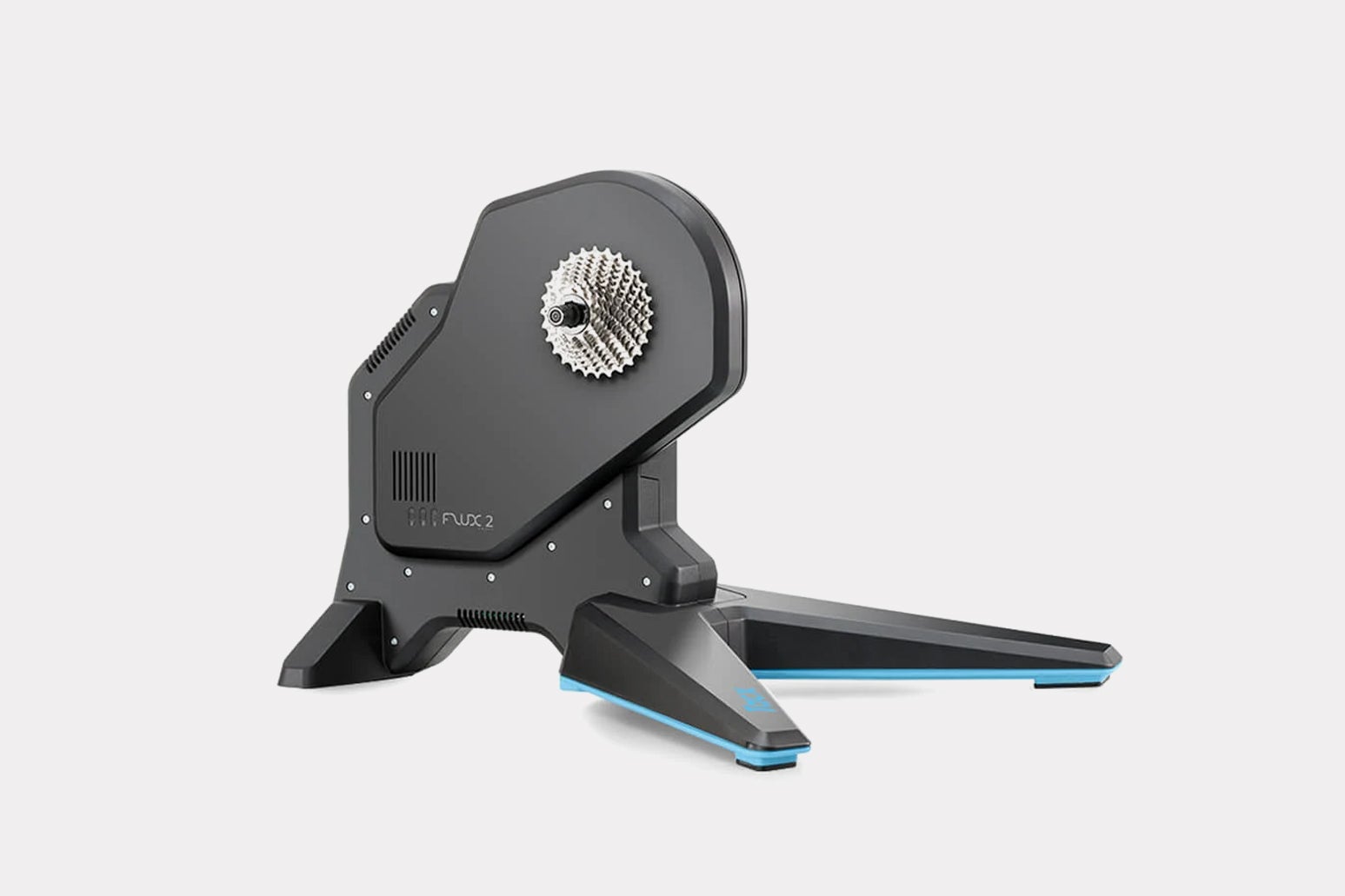
| Model: | Garmin Tacx Flux 2 |
| Specs: | 16% slope simulation; +/-2.5% power measurement; 2,000w max resistance |
| Bottom line: | You can still find this product for sale but there are better options in 2024/2025. Unless you find a screaming deal, or don’t have easy access to Wahoo products in your country, pass on this. Don’t forget you also need a cassette. |
| Buy: | $499.99 USD from Garmin
$879.99 CAD from Garmin €799.00 from Garmin |
Back to top
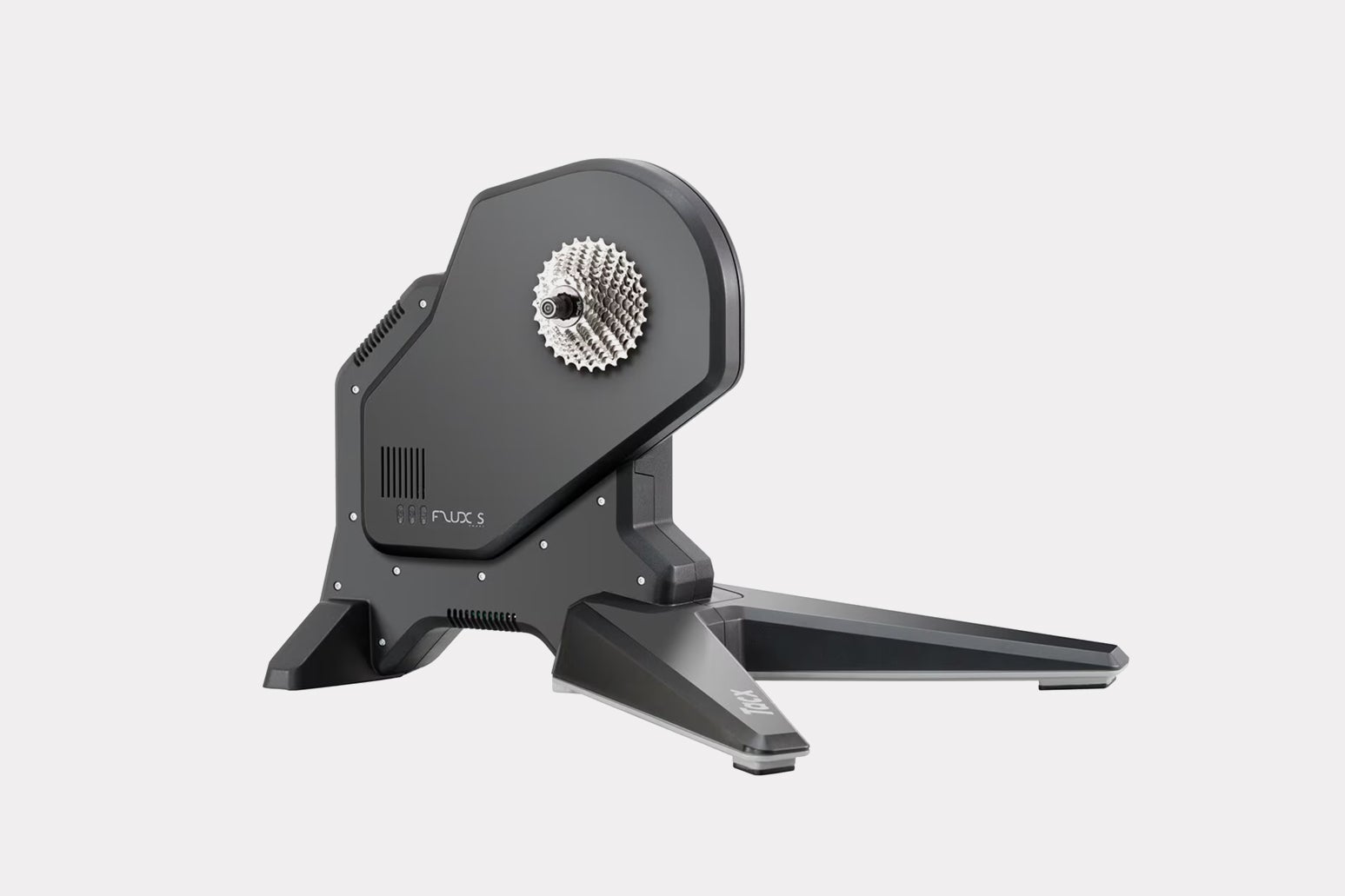
| Model: | Garmin Tacx Flux S |
| Specs: | 10% slope simulation; +/-3% power measurement; 1,500w max resistance |
| Bottom line: | You can still find this product for sale but there are better options in 2024/2025. Unless you find a screaming deal, or don’t have easy access to Wahoo products in your country, pass on this. Don’t forget you also need a cassette. |
| Buy: | $399.99 USD from Garmin
$699.99 CAD from Garmin €699.99 from Garmin |
Back to top
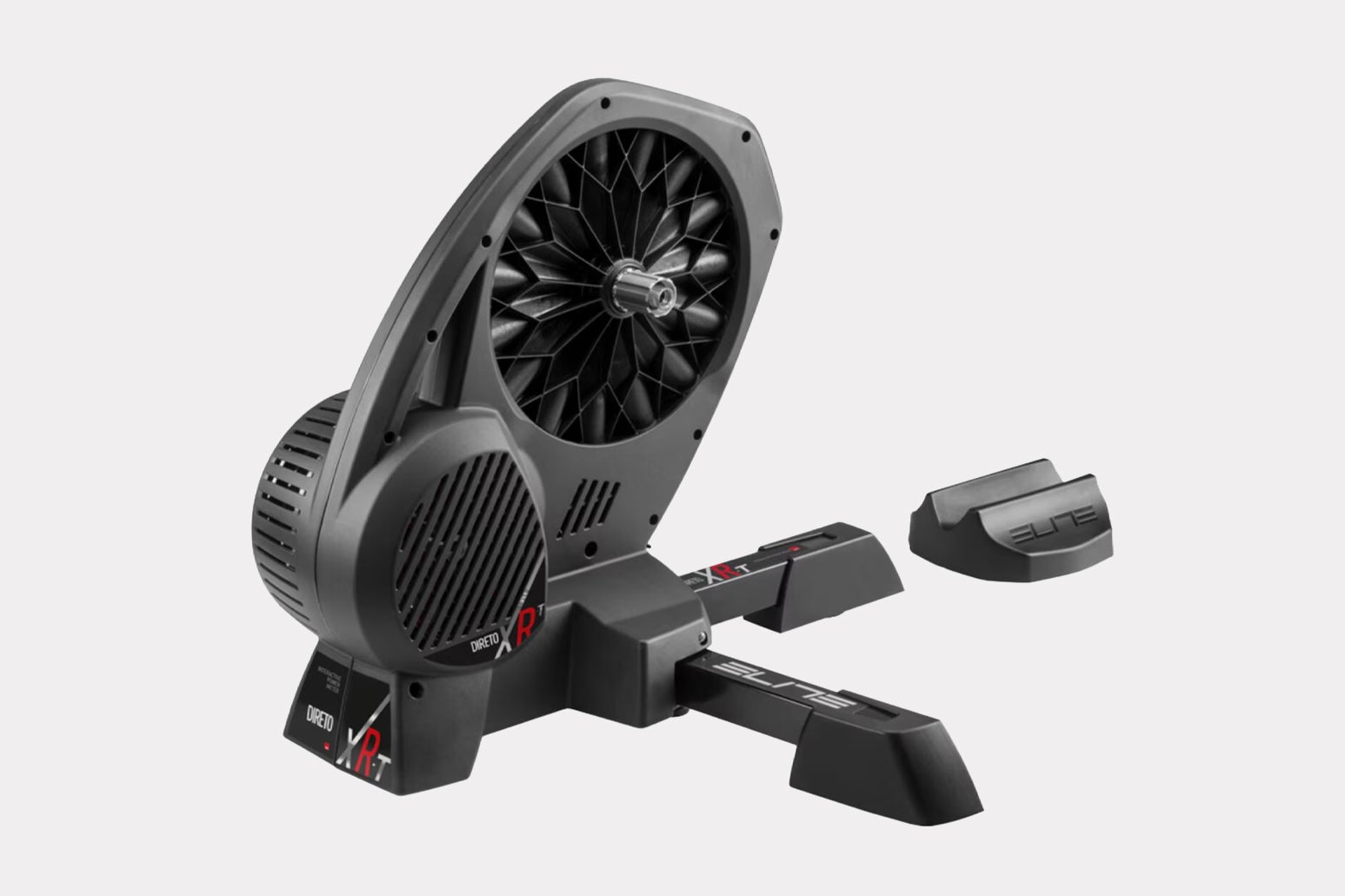
| Model: | Elite Direto XR / Elite Direto XR-T |
| Specs: | 24% slope simulation; +/-1.5% power measurement; 2,300w max resistance |
| Bottom line: | The Direto XR and Direto XR-T are the same product but the XR-T is sold without a cassette. It was a response to the lack of available cassettes after COVID and you can sometimes find the XR with a cassette available for sale even though the XR-T is newer. In both cases, you can still find this product for sale but there are better options in 2024/2025. Unless you find a screaming deal, or don’t have easy access to Wahoo products in your country, pass on this.
There is also a Cog and Click version coming soon. Suggested pricing on it seems to make it a tough recommendation however it may be worth a look once it’s available for purchase. |
| Buy: | $599.99 from Backcountry
€460.08 from R2-Bike £499.00 from ChainReaction |
Back to top
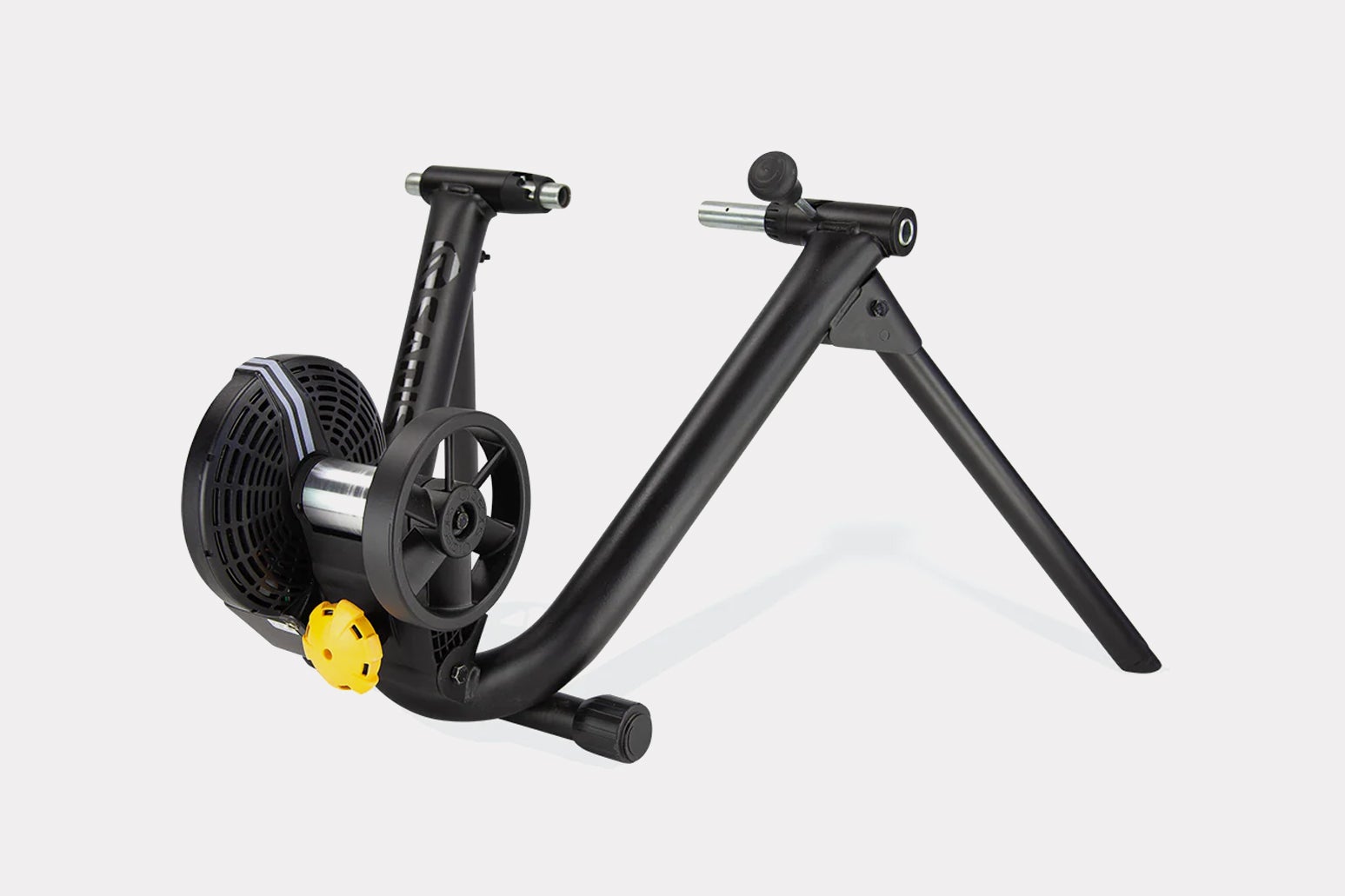
| Model: | Saris M2 Smart Equipped Indoor Bike Trainer |
| Specs: | 15% slope simulation; +/- 5% power measurement; 1,500w max resistance |
| Bottom line: | In terms of wheel-on smart trainers, the specs seem okay here. The problem is price. It’s already more expensive than the Elite but it also doesn’t come with a front wheel block. By the time you’ve got a setup that’s ready to ride, you are looking at a price that makes no sense for a trainer of this style in 2024 / 2025. You probably want to think hard about this at any price. |
| Buy: | $299.99 USD/$454.99 CAD from Saris
£349.00 from ChainReaction |
Back to top





 No products in the cart.
No products in the cart.